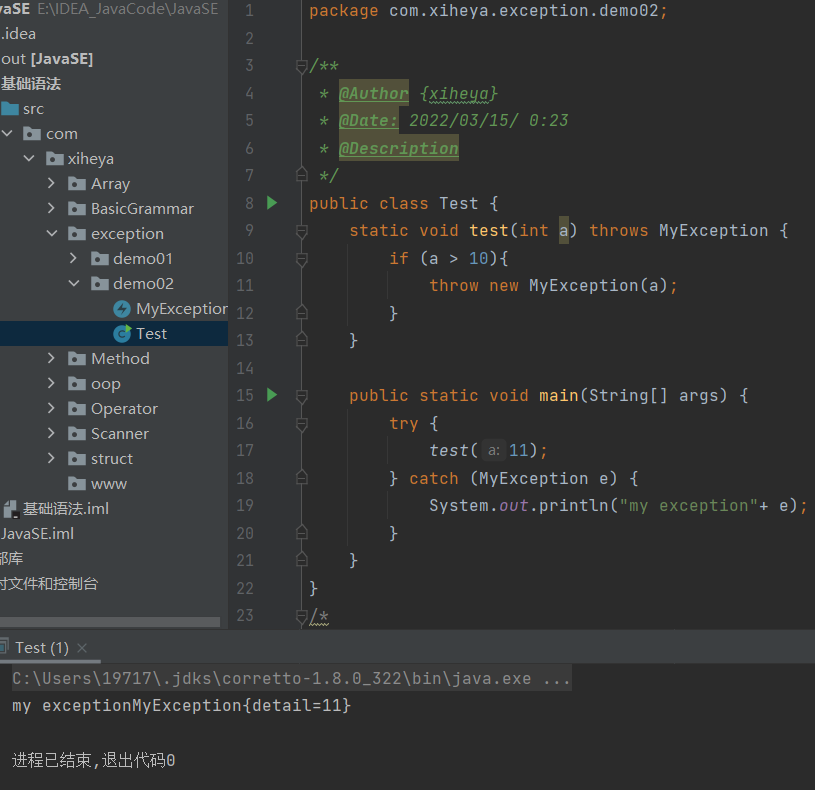Java异常02

AI-摘要
Rookie GPT
AI初始化中...
介绍自己 🙈
生成本文简介 👋
推荐相关文章 📖
前往主页 🏠
前往爱发电购买
Java异常02
Rookie_l捕获异常
try catch关键字
- try:监控类型
- catch:想要捕获的异常,可以捕获异常
- finally:可以处理善后工作,(可以不要finally)
- 使用 try catch关键字可以在出现异常时实现程序不终止,继续跑完程序。我们只需要在try catch中处理这些异常就可以了。
1 | package com.xiheya.exception; |
throw 和 throws关键字
- throw关键字一般是在方法体内主动抛出异常
- throws关键字一般是在方法名中抛出异常
1 | public class Test { |
自定义异常
- 使用Java内置的异常类可以描述在编程时出现的大部分异常情况。除此之外,用户还可以自定义异常。用户自定义异常类,只需要继承Exception类即可。
- 在程序中使用自定义异常类,大体可以分为以下几个步骤:
- 创建自定义异常类。
- 在方法中通过throw关键字抛出异常对象。
- 如果在当前抛出异常的方法中处理异常,可以使用try-catch语句捕获并处理;否则在方法的声明处通过throws关键字指明要抛出给方法调用者的异常,继续进行下一步。
- 再出现异常方法的调用者中捕获并处理异常。
代码
1 | package com.xiheya.exception.demo02; |
运行结果
经验总结
- 处理运行时异常时,采用逻辑去合理规避同时辅助try-catch处理
- 在多重catch块后面,可以加一个catch(Exception)来处理可能会被漏掉的异常。
- 对于不确定的代码,也可以加上一个try-catch,处理潜在的异常。
- 尽量去处理异常,切忌只是简单地调用printStackTrace()去打印输出
- 具体如何处理异常,要根据不同的业务需求和异常类型去决定
- 尽量添加finally语句块去释放占用的资源。
评论
匿名评论隐私政策










